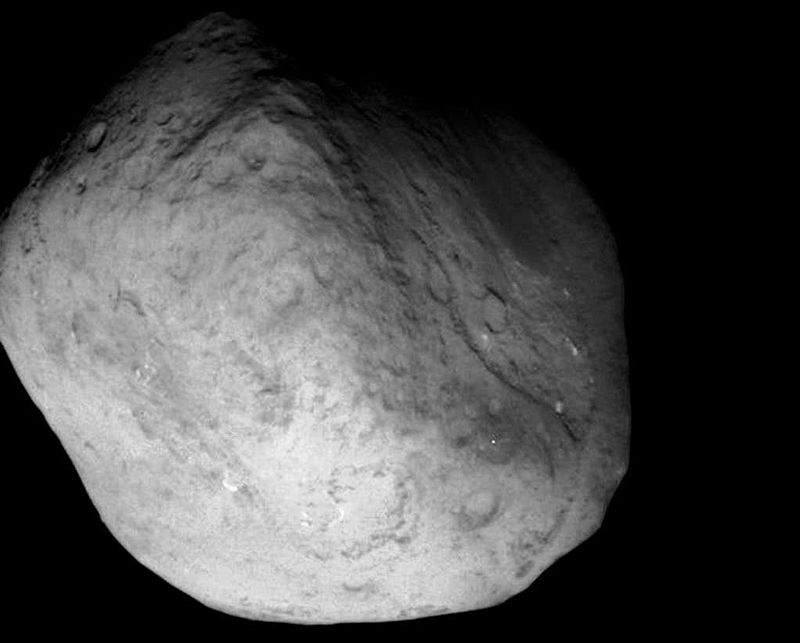It looks like you're using an Ad Blocker.
Please white-list or disable AboveTopSecret.com in your ad-blocking tool.
Thank you.
Some features of ATS will be disabled while you continue to use an ad-blocker.
share:
A picture of comet Chury taken by the Rosetta probe.
Melting snowball?
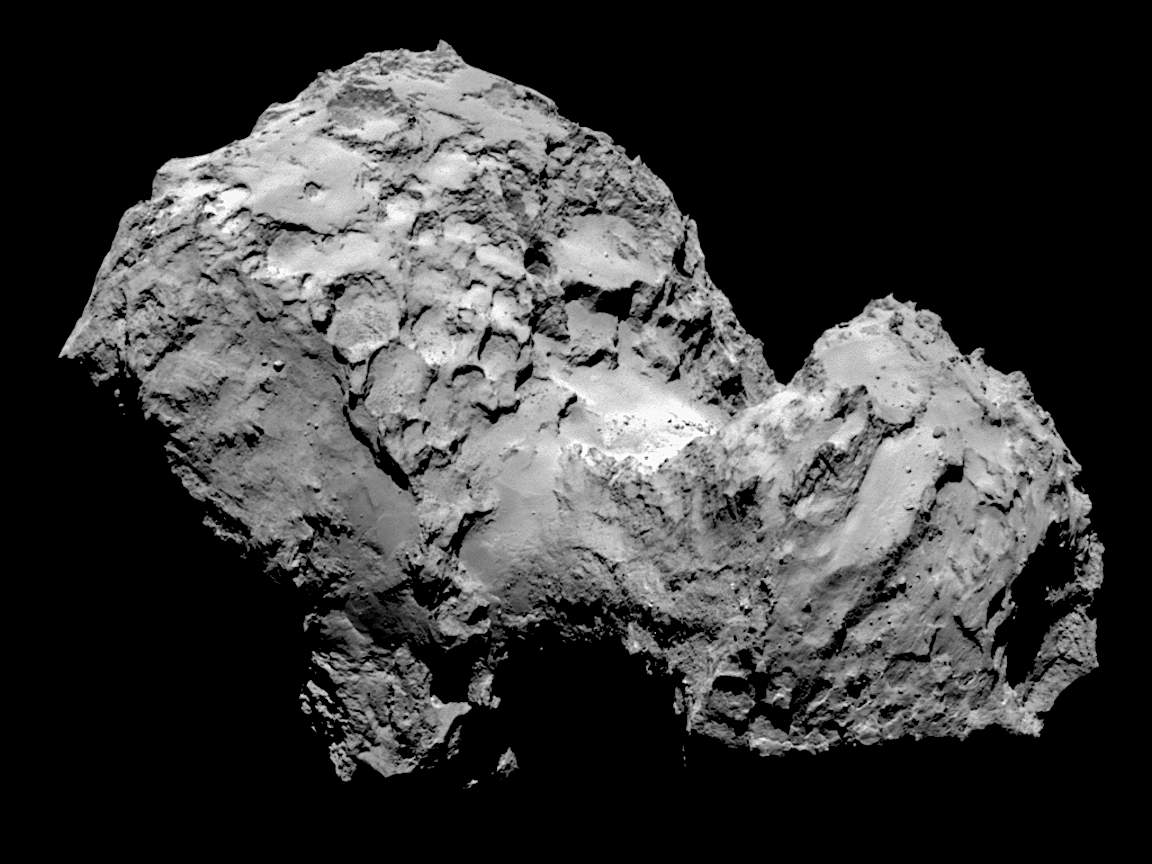
Comet Borrelly:

Comet Hartley 2:

Comet Haley:
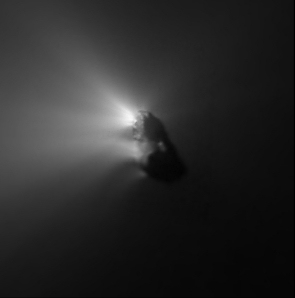
It's a rather odd coincidence that EU theorists found this same shape to be present in discharge experiments, no?
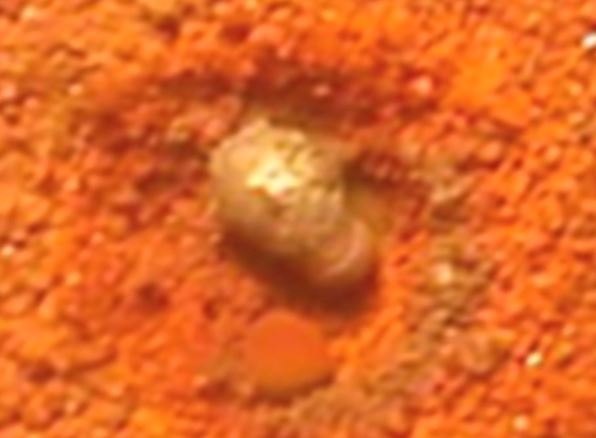
How many more rocky, cratered, solid, pitch black, twin lobed pieces of rock do we need to look at before EU theorists are proven right? A hundred? A thousand?
This twin lobed shape is not a coincidence. It is not caused by two comets smashing into each other. It is caused by a massive electrical discharge blasting material off the surface of planets and moons.
Here's a breakdown of the shapes we've observed on the few comet nucleus that we've directly imaged:
Tempel1 - round
Hartley - lobed
Borrelly - lobed
Lovejoy - oblong
Halley - lobed
Wild2 - round
Chury - lobed
Over 50% of them have twin lobes.
Melting snowball?

Comet Borrelly:

Comet Hartley 2:

Comet Haley:

It's a rather odd coincidence that EU theorists found this same shape to be present in discharge experiments, no?

How many more rocky, cratered, solid, pitch black, twin lobed pieces of rock do we need to look at before EU theorists are proven right? A hundred? A thousand?
This twin lobed shape is not a coincidence. It is not caused by two comets smashing into each other. It is caused by a massive electrical discharge blasting material off the surface of planets and moons.
Here's a breakdown of the shapes we've observed on the few comet nucleus that we've directly imaged:
Tempel1 - round
Hartley - lobed
Borrelly - lobed
Lovejoy - oblong
Halley - lobed
Wild2 - round
Chury - lobed
Over 50% of them have twin lobes.
edit on 8/6/2014 by AnarchoCapitalist because: (no reason given)
a reply to: butcherguy
Planets weren't created by an electrical discharge blasting material off into space.
Planets weren't created by an electrical discharge blasting material off into space.
a reply to: AnarchoCapitalist
So two or three is a fair representation of the millions of comets that are out there is it?
So two or three is a fair representation of the millions of comets that are out there is it?
The dirty snowball hypothesis has always bothered me,something about it just does not click.
a reply to: AnarchoCapitalist
Also, how much of the Rosetta mission will you guys be ignoring when it orbits Comet 67-P?
All of it?
Also, how much of the Rosetta mission will you guys be ignoring when it orbits Comet 67-P?
All of it?
a reply to: AnarchoCapitalist
In other words, EU predicts that comets are either round, or not. That's quite a prediction. On the other hand, conventional science predicts that cometary bodies have very little mass and, hence, tend not to have sufficient gravity to be spherical. Gravity wins again.
Nope.
Round objects were created in the experiments too.
It's just not a coincidence that out of the few comet nucleus that we've directly imaged, many of them have twin lobes.
In other words, EU predicts that comets are either round, or not. That's quite a prediction. On the other hand, conventional science predicts that cometary bodies have very little mass and, hence, tend not to have sufficient gravity to be spherical. Gravity wins again.
originally posted by: AlphaHawk
a reply to: AnarchoCapitalist
So two or three is a fair representation of the millions of comets that are out there is it?
Four out of:
Tempel1 - round
Hartley - lobed
Borrelly - lobed
Lovejoy - oblong
Halley - lobed
Wild2 - round
Chury - lobed
Over 50%.
edit on 8/6/2014 by AnarchoCapitalist because: (no reason given)
originally posted by: DJW001
a reply to: AnarchoCapitalist
Nope.
Round objects were created in the experiments too.
It's just not a coincidence that out of the few comet nucleus that we've directly imaged, many of them have twin lobes.
In other words, EU predicts that comets are either round, or not. That's quite a prediction. On the other hand, conventional science predicts that cometary bodies have very little mass and, hence, tend not to have sufficient gravity to be spherical. Gravity wins again.
EU theory predicts twin lobes will be common, not rare.
The lobed shape is not a random coincidence.
a reply to: AnarchoCapitalist
I happen to think you're absolutely right, but here you're likely to experience the "Science Already Knows Exactly How The Universe Works!!!" crowd... They're everywhere, and their poor lil butts hurt terribly if you so much as hint that they might be wrong.
I happen to think you're absolutely right, but here you're likely to experience the "Science Already Knows Exactly How The Universe Works!!!" crowd... They're everywhere, and their poor lil butts hurt terribly if you so much as hint that they might be wrong.
Advanced cloak/stealth technology would make optical observation equipment see what wants to be seen... Even if what's seen isn't actually true
form. The tech would present normal celestial hiding?
Your OP does have some interesting points
NAMASTE*******
Your OP does have some interesting points
NAMASTE*******
a reply to: Sunwolf
Dirty snowball is just an over simplified explanation for comets, anyone who cares or understands them don't refer to them as that, unless they're trying to explain it in laymen's terms.
No wonder then, that EU proponents like to throw it around so much...
Dirty snowball is just an over simplified explanation for comets, anyone who cares or understands them don't refer to them as that, unless they're trying to explain it in laymen's terms.
No wonder then, that EU proponents like to throw it around so much...
a reply to: AnarchoCapitalist
What explains all the lobed asteroids, then?
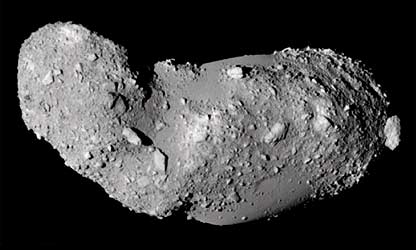
Asteroid Itokawa
What explains all the lobed asteroids, then?

Asteroid Itokawa
edit on 6-8-2014 by DJW001 because: Edit to change caption.
a reply to: AlphaHawk
It's not all that over-simplified.
Comets are the darkest known objects in the universe. They are blacker than asphalt. This is because they are burned to a crisp by electrical discharges.
All of the comets we have directly imaged have turned out to be cratered pieces of solid rock, with virtually no ice present on the surface. Many comets have been observed to have no ice on the surface at all.
No discharging "vent" has ever been directly imaged with close-up pictures. Chury will be no exception. The Rosetta probe will orbit Chury for months, and it will NEVER directly image a so-called "vent" spraying water-ice into space.
EU theory predicts the Rosetta lander may have problems sticking to the surface of Chury because it will not have any ice to drill into. It will have to drill into solid rock, which will probably cause the lander to bounce off the surface once they attempt to drill into it.
It's not all that over-simplified.
Comets are the darkest known objects in the universe. They are blacker than asphalt. This is because they are burned to a crisp by electrical discharges.
All of the comets we have directly imaged have turned out to be cratered pieces of solid rock, with virtually no ice present on the surface. Many comets have been observed to have no ice on the surface at all.
No discharging "vent" has ever been directly imaged with close-up pictures. Chury will be no exception. The Rosetta probe will orbit Chury for months, and it will NEVER directly image a so-called "vent" spraying water-ice into space.
EU theory predicts the Rosetta lander may have problems sticking to the surface of Chury because it will not have any ice to drill into. It will have to drill into solid rock, which will probably cause the lander to bounce off the surface once they attempt to drill into it.
edit on 8/6/2014 by AnarchoCapitalist because: (no reason given)
originally posted by: DJW001
a reply to: AnarchoCapitalist
What explains all the lobed asteroids, then?
Asteroid Itokawa
Same thing.
EU theory says there is no compositional difference between comets and asteroids. They are made of the same stuff and made the same way.
The only difference between a comet and an asteroid is it's orbit and the inherent electrical charge of the object.
We should see little over-all difference between comets and asteroids in terms of their appearance, which indeed seems to be the case.
If we take the comet coma out of a picture and put comet images side-by-side with asteroid pictures, an untrained eye could not tell the difference between the two.
edit on 8/6/2014 by AnarchoCapitalist because: (no reason given)
a reply to: AnarchoCapitalist
How and why would the electrical charge change? If it was electrically active enough to form lobes through "discharge," why would it become inactive? In the conventional model, some asteroids are just comets that have depleted their volatile elements.
EU theory says there is no compositional difference between comets and asteroids. They are made of the same stuff and made the same way.
The only difference between a comet and an asteroid is it's orbit and the inherent electrical charge of the object.
How and why would the electrical charge change? If it was electrically active enough to form lobes through "discharge," why would it become inactive? In the conventional model, some asteroids are just comets that have depleted their volatile elements.
originally posted by: DJW001
a reply to: AnarchoCapitalist
EU theory says there is no compositional difference between comets and asteroids. They are made of the same stuff and made the same way.
The only difference between a comet and an asteroid is it's orbit and the inherent electrical charge of the object.
How and why would the electrical charge change? If it was electrically active enough to form lobes through "discharge," why would it become inactive? In the conventional model, some asteroids are just comets that have depleted their volatile elements.
Because EU theory says the Sun is surrounded by an electric field, the oblong orbit of comets will cause them to acquire a more negative charge while farther away from the Sun. As they quickly approach the Sun, the difference in charge between the surrounding space plasma and the comet will cause it to rapidly discharge in order to maintain a charge balance.
The video explains all of this.
edit on 8/6/2014 by AnarchoCapitalist because: (no reason given)
a reply to: AnarchoCapitalist
So why do some comets stop doing this? You have explained nothing.
Because EU theory says the Sun is surrounded by an electric field, the oblong orbit of comets will cause them to acquire a more negative charge while farther away from the Sun. As they quickly approach the Sun, the difference in charge between the surrounding space plasma and the comet will cause it to rapidly discharge in order to maintain a charge balance.
So why do some comets stop doing this? You have explained nothing.
new topics
-
Las Vegas UFO Spotting Teen Traumatized by Demon Creature in Backyard
Aliens and UFOs: 1 hours ago -
2024 Pigeon Forge Rod Run - On the Strip (Video made for you)
Automotive Discussion: 1 hours ago -
Gaza Terrorists Attack US Humanitarian Pier During Construction
Middle East Issues: 2 hours ago -
The functionality of boldening and italics is clunky and no post char limit warning?
ATS Freshman's Forum: 3 hours ago -
Meadows, Giuliani Among 11 Indicted in Arizona in Latest 2020 Election Subversion Case
Mainstream News: 3 hours ago -
Massachusetts Drag Queen Leads Young Kids in Free Palestine Chant
Social Issues and Civil Unrest: 4 hours ago -
Weinstein's conviction overturned
Mainstream News: 5 hours ago -
Supreme Court Oral Arguments 4.25.2024 - Are PRESIDENTS IMMUNE From Later Being Prosecuted.
Above Politics: 7 hours ago -
Krystalnacht on today's most elite Universities?
Social Issues and Civil Unrest: 7 hours ago -
Chris Christie Wishes Death Upon Trump and Ramaswamy
Politicians & People: 7 hours ago
top topics
-
Krystalnacht on today's most elite Universities?
Social Issues and Civil Unrest: 7 hours ago, 8 flags -
Weinstein's conviction overturned
Mainstream News: 5 hours ago, 6 flags -
University of Texas Instantly Shuts Down Anti Israel Protests
Education and Media: 9 hours ago, 6 flags -
Supreme Court Oral Arguments 4.25.2024 - Are PRESIDENTS IMMUNE From Later Being Prosecuted.
Above Politics: 7 hours ago, 5 flags -
Massachusetts Drag Queen Leads Young Kids in Free Palestine Chant
Social Issues and Civil Unrest: 4 hours ago, 4 flags -
Meadows, Giuliani Among 11 Indicted in Arizona in Latest 2020 Election Subversion Case
Mainstream News: 3 hours ago, 4 flags -
Chris Christie Wishes Death Upon Trump and Ramaswamy
Politicians & People: 7 hours ago, 2 flags -
Any one suspicious of fever promotions events, major investor Goldman Sachs card only.
The Gray Area: 11 hours ago, 2 flags -
Gaza Terrorists Attack US Humanitarian Pier During Construction
Middle East Issues: 2 hours ago, 2 flags -
2024 Pigeon Forge Rod Run - On the Strip (Video made for you)
Automotive Discussion: 1 hours ago, 1 flags
active topics
-
University of Texas Instantly Shuts Down Anti Israel Protests
Education and Media • 193 • : cherokeetroy -
2024 Pigeon Forge Rod Run - On the Strip (Video made for you)
Automotive Discussion • 7 • : TheInvisibleRedneck -
Candidate TRUMP Now Has Crazy Judge JUAN MERCHAN After Him - The Stormy Daniels Hush-Money Case.
Political Conspiracies • 788 • : Threadbarer -
Supreme Court Oral Arguments 4.25.2024 - Are PRESIDENTS IMMUNE From Later Being Prosecuted.
Above Politics • 63 • : Annee -
Las Vegas UFO Spotting Teen Traumatized by Demon Creature in Backyard
Aliens and UFOs • 5 • : FlyersFan -
Thousands Of Young Ukrainian Men Trying To Flee The Country To Avoid Conscription And The War
Other Current Events • 139 • : Consvoli -
Is there a hole at the North Pole?
ATS Skunk Works • 39 • : Athetos -
The functionality of boldening and italics is clunky and no post char limit warning?
ATS Freshman's Forum • 11 • : JonnyC555 -
Nearly 70% Of Americans Want Talks To End War In Ukraine
Political Issues • 89 • : Xtrozero -
Gaza Terrorists Attack US Humanitarian Pier During Construction
Middle East Issues • 19 • : Consvoli

